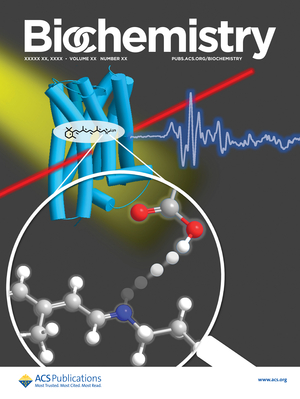The research work of Yosuke Mizuno, in his first year of the Master's Course, Kandori Laboratory, has been selected as the "Supplementary Cover Art" of an international journal, Biochemistry
Category:News|Publishing : December 22, 2022
The research paper "Early Proton Transfer Reaction in a Primate Blue-Sensitive Visual Pigment" authored by Mr. Yosuke Mizuno in his first year of the Master's Course, Kandori Laboratory, in a collaboration work with Assistant Processor Kota Katayama, Distinguished Professor Hideki Kandori, and Professor Hiroo Imai of Kyoto University, a co-researcher, was highly acclaimed and selected as the Supplementary Cover Art of Biochemistry, an academic journal in the field of biochemistry published by the American Chemistry Society. The study revealed the structural changes of the visual sensor protein utilized by humans and primates to recognize blue light (blue-sensitive visual pigment).
Three types of visual sensor proteins (blue-, green-, and red-sensitive visual pigments) are responsible for our color vision. In the study, the researchers focused on analyzing structural changes of blue-sensitive visual pigment by infrared spectroscopy, in order to elucidate the mechanism of how the protein recognizes blue light. As a result, they succeeded in capturing atomic-level changes in the chemical interactions (hydrogen bonding switch and proton transfer reaction) of the retinal chromophore and amino acids inside blue-sensitive visual pigment, thus revealing some of the blue-light reception mechanism. Blue light is popular among people as a healing color, while the light has higher energy than green and red lights. This seemingly contradictory event may be related to the specific interaction changes in blue-sensitive visual pigment observed in this study. The results of this study are expected not only to elucidate the molecular mechanism of color discrimination in humans, but also to deepen our understanding of the photoactivation mechanism of retinal proteins (animal and microbial rhodopsins).
Kandori Lab.
Biochemistry:"Early Proton Transfer Reaction in a Primate Blue-Sensitive Visual Pigment"
Cargo Dragon Spacecraft No. 26 (SpX-26) with a titanium alloy sample fabricated by NITech launched into space! Under the Erasmus+ Programme, faculty and staff members of Friedrich-Alexander-Universität Erlangen-Nürnberg (FAU), Germany, visited Nagoya Institute of Technology

 Japanese
Japanese
